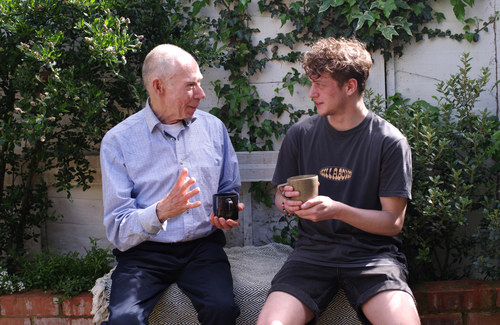
Using a computer model, researchers at University College London have found that there is no realistic chance in the UK of reaching the 'Ending AIDS' goal for 2030 that was first set by the United Nations and has since been endorsed by the UK government.
The model was able to determine that PrEP and treatment as prevention have contributed equally to reducing HIV infections in gay and bisexual men over the past decade. Condoms made a similar contribution, especially between 2012 and 2016 when PrEP was not easily available.
In their paper, published in The Lancet HIV this month, Dr Valentina Cambiano and colleagues conclude that if even one of the three methods had not been used as it was, there would have been over twice as many HIV infections last year. If neither PrEP nor treatment as prevention had been scaled up, there would have been three times as many.
But there is “zero chance” of achieving the ‘Ending AIDS’ goal by 2030. In the case of England this is defined as ending HIV transmission, and in gay and bisexual men, implies an incidence of less than one new HIV infection per 10,000 men a year, equating to no more than 50 infections. The study did find that there is a chance of reaching the more modest interim goal of 250 infections per year by 2025.
The HIV synthesis model has been used previously to calculate the cost-effectiveness of PrEP in the UK. A preliminary run of the same data on HIV prevention methods was presented at the Conference on Retroviruses and Opportunistic Infections in 2022 and came to similar conclusions.
The published paper takes these one stage further by projecting continuing trends forward to 2043 – and even to 2103 for a cost-effectiveness analysis of HIV prevention. It was developed with input from public health and community partners including NAM aidsmap.
The last decade: what contributed to the fall in HIV cases?
For the last two years, new diagnoses of HIV in gay and bisexual men have reached a plateau, after falling almost threefold between 2014 and 2020 (from 3222 to 1212 diagnoses). For the last two years, however, the total was about the same (1238 and 1166). We don’t know why, but it is probably to do with lower testing rates, and therefore delayed diagnoses, during COVID.
HIV diagnoses do not reflect underlying incidence – the number of infections actually acquired in the UK in the previous year. This is partly because many HIV infections happen overseas, but also because with HIV there is a delay of weeks to years between infection and diagnosis. The HIV synthesis model used data from CD4 counts and recency assays to estimate that new HIV infections in gay and bisexual men peaked in 2013 at about 3000 a year and have since then fallen fourfold to 597 in 2022. It predicted that infections in gay men will continue to fall, though more slowly than before, reaching 260 a year by 2030 rather than the target of 50.
What if things had been different?
What contributed to this decline? To estimate the contribution of the three prevention methods, the researchers fed several ‘counterfactual’ scenarios into the model to see how many HIV infections it predicted by 2023.
In the case of PrEP this was simple; the assumption was that PrEP was not introduced from 2015 onwards.
The testing-and-treatment counterfactual was in two parts. Firstly, it assumed that the annual number of tests taken by gay men stayed at the 2012 level of 73,000 a year, instead of increasing to 193,000 in 2022. Then it assumed that the policy of not prescribing ART till CD4 counts fell below 350 was continued to the present, instead of changing to universal ART in 2015.
The condom counterfactual assumed that when universal test-and-treat began in 2012, the fraction of the gay and bisexual male population most at risk of HIV – defined as those having condomless sex with five or more partners a year – suddenly rose from 14% to 21%, the level it was in 1980 before HIV appeared. (The real fraction has risen since, but is still only 16%).
The counterfactuals are unreal scenarios, as they exist in isolation, whereas the usage of one prevention method is influenced by all the others. This influence can be positive, as in the requirement for PrEP users to test for HIV every three months, or negative, as when ART and PrEP led to lower condom use. The point of picturing them as the only thing that changed is to isolate their relative contribution. However, given that PrEP and U=U are complementary, the researchers also imagined a counterfactual in which neither universal test-and-treat nor PrEP were introduced.
They found that the contributions of each method were remarkably similar. The model concluded that if PrEP had not been introduced, the annual number of infections would have been 1228. If test-and treat had not been introduced, the number would have been 1237 – respectively 2.16 and 2.18 times the 597 infections the incidence model said actually occurred. If neither had been introduced, there would have been 2044 infections (3.64 times the actual number).
The contribution of condoms was about the same size too. If condom usage had crashed to 1980 levels in 2012, there would have been 1299 infections in 2022, or 2.27 times the actual number.
But the trajectory taken to get there would have been very different, and HIV prevalence rather than incidence would be much higher now. In the condom counterfactual, there would have been a sharp rise in HIV incidence, peaking at 5400 infections a year in 2016, a number never even seen in the 1980s. After 2016 incidence would have started declining, due to the influence of U=U and PrEP. But between 2012 and 2022 around 33,000 gay and bisexual men would have acquired HIV in the UK, more than double the 15,500 men who actually did.
Continued condom use at 2012 levels therefore did have an important role in moderating the epidemic, especially before 2016.
The next decade: will HIV keep declining?
Given the present rates of testing, PrEP and condom use, the model forecasts that HIV infections will continue to decline, though they will fall more slowly over time. By 2043, it predicts, there will be about 100 new infections in gay and bisexual men in the UK per year. The UN target of 50 infections a year by 2030 will certainly be missed: Cambiano and colleagues found a “0% chance” of it happening, with a median of 263 infections per year expected by 2030 in gay men.
There is an interim target of no more than 250 annual infections by 2025. Although the median number of infections expected in 2025 is 388, the model, given its inevitable uncertainties, finds that there is a 23% chance of hitting this target.
What if we improve the uptake of the various prevention methods? The researchers fed in four different, quite ambitious, scenarios to see if this made hitting the targets more likely.
The first assumption was that there will be an increase in the proportion of gay and bisexual men at risk of HIV who test for it annually, from 39% to 52%. The second assumed that PrEP use in gay men increases by 39%. This would imply an increase in the number of men in the UK who have started PrEP from about 72,500 in 2022 to just over 100,000. The third was an assumption that the proportion of gay and bisexual men who have condomless sex with five or more partners a year falls from the present 16% to 5%.
The fourth combined two, more ambitious, scenarios for testing and PrEP. It envisaged an increase in the proportion of gay men who test annually of 34%. This implies an increase in the number of individual men who take at least one test a year from about 32,000 to about 43,000, or total tests from 193,000 to 258,000. And it supposes an increase in PrEP initiations of 55%, to about 115,000.
Some of these scenarios may seem more likely than others, but the idea is, again, to identify which change in prevention methods might have the most influence.
The decrease in condomless sex, possibly the least likely scenario, would have the greatest impact, with a further reduction of 36% in HIV infections by 2043 over and above the one predicted using the current scenario. The combined increases in testing and PrEP would lead to nearly as great a reduction, of 34%. The 39% increase in PrEP alone would reduce infections by an added 23%, and the increase in testing by 15%.
Even though ambitious, the increases in testing plus PrEP (or the large decline in condomless sex) would only increase the chance of hitting the 2030 target from zero to 3%. It would, however, improve the chances of hitting the interim 2025 target of 250 infections by 76%.
Over a period of 80 years, these additional uptakes in prevention methods would prevent an additional 21 HIV-related deaths and 89 HIV infections per year. If the NHS is prepared to pay up to £30,000 per quality-adjusted life-year gained to achieve these reductions, which is a typical cost-effectiveness threshold, then this implies an additional spend of £1.62 million on HIV testing and PrEP – or, for the impact on the NHS budget to stay neutral, a reduction in their cost of 16%. The authors suggest thus might be achieved through the expansion of self-testing and further promotion of PrEP.
Implications
A commentary on the paper by scientists at the University of Bristol picks up on the strain on sexual health services that may make further increases in HIV prevention unlikely. Perhaps thinking particularly of reports of PrEP waiting lists, they comment: “There remain practical barriers to accessing these interventions. General access to the UK’s National Health Service (NHS), including difficulties with booking appointments and a lack of appointment availability, is a major issue.”
Describing the model’s finding that the 2030 target has almost no chance of being reached as “unfortunate”, they point out that previous modelling studies have not painted such a pessimistic scenario, with one estimating a 40% chance of reaching the 2030 target. And they add that neither of these models have incorporated injectable PrEP which, in the HPTN 083 study, prevented nearly 70% more HIV infections than oral PrEP.
It is also notable that, with a 26% rise in diagnoses of HIV acquired by heterosexual women in the UK in the last two years, despite a continuing 19% post-COVID reduction in HIV testing, that preventing HIV among gay and bisexual men may not be the greatest barrier to achieving ‘an end to AIDS’ in the UK.
At least the news that 3275 heterosexuals at risk of HIV, with women slightly in the majority, have now started PrEP and that an increasing number are having their PrEP needs assessed, offers some good news. Maybe what we need next is a model of how improvements in HIV prevention interventions may reduce infections in heterosexual men and women.
Overall, however, this study’s suggests, unlike some previous ones, that the target of less than 50 infections a year, even just in gay and bisexual men and in a health system with comparatively excellent services, may never be achieved without a completely new HIV prevention solution coming along, such as a vaccine.
Cambiano V et al. The effect of combination prevention strategies on HIV incidence among gay and bisexual men who have sex with men in the UK: a model-based analysis. The Lancet HIV 10: E713-E722, 2023 (open access).
https://doi.org/10.1016/S2352-3018(23)00204-7.
Trickey A et al. Eliminating HIV in the UK among men who have sex with men. The Lancet HIV 10: E695-696, 2023.
https://doi.org/10.1016/S2352-3018(23)00239-4.
Gus Cairns is a co-author of the study.

